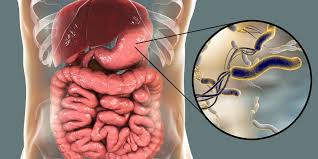
Breaking News
 Final Summer Solar Panel Test: Bifacial Optimization. Save Money w/ These Results!
Final Summer Solar Panel Test: Bifacial Optimization. Save Money w/ These Results!
 I wish I was taught Einstein's Special Relativity this way!
I wish I was taught Einstein's Special Relativity this way!
 MEDICAL MIRACLE IN JAPAN: Paralyzed Man Stands Again After Revolutionary Stem Cell Treatment!
MEDICAL MIRACLE IN JAPAN: Paralyzed Man Stands Again After Revolutionary Stem Cell Treatment!
Top Tech News
 Insulator Becomes Conducting Semiconductor And Could Make Superelastic Silicone Solar Panels
Insulator Becomes Conducting Semiconductor And Could Make Superelastic Silicone Solar Panels
 Slate Truck's Under $20,000 Price Tag Just Became A Political Casualty
Slate Truck's Under $20,000 Price Tag Just Became A Political Casualty
 Wisdom Teeth Contain Unique Stem Cell That Can Form Cartilage, Neurons, and Heart Tissue
Wisdom Teeth Contain Unique Stem Cell That Can Form Cartilage, Neurons, and Heart Tissue
 Hay fever breakthrough: 'Molecular shield' blocks allergy trigger at the site
Hay fever breakthrough: 'Molecular shield' blocks allergy trigger at the site
 AI Getting Better at Medical Diagnosis
AI Getting Better at Medical Diagnosis
 Tesla Starting Integration of XAI Grok With Cars in Week or So
Tesla Starting Integration of XAI Grok With Cars in Week or So
 Bifacial Solar Panels: Everything You NEED to Know Before You Buy
Bifacial Solar Panels: Everything You NEED to Know Before You Buy
 INVASION of the TOXIC FOOD DYES:
INVASION of the TOXIC FOOD DYES:
 Let's Test a Mr Robot Attack on the New Thunderbird for Mobile
Let's Test a Mr Robot Attack on the New Thunderbird for Mobile
 Facial Recognition - Another Expanding Wolf in Sheep's Clothing Technology
Facial Recognition - Another Expanding Wolf in Sheep's Clothing Technology
75% of stomach cancer cases could be prevented with a simple treatment

Chronic infection with the bacteria Helicobacter pylori is the strongest known risk factor for gastric, or stomach, cancer. Importantly, it's a preventable risk factor, treatable using a combination of antibiotics and proton pump inhibitors (PPIs), which reduce the amount of acid produced in the stomach.
Regardless of its preventability, there has been an alarming rise in stomach cancer in people under 50. Now, research led by the International Agency for Research on Cancer (IARC), the specialized cancer agency of the World Health Organization (WHO), has projected the future incidence of stomach cancer, including cases attributable to H. pylori infections, among people born between 2008 and 2017.
The researchers first used large-scale modeling to estimate the future burden of stomach cancer, assuming there were no changes in current prevention or treatment strategies. Then they estimated how many of those cases are linked to H. pylori. National, age-specific incidence rates were pulled from GLOBOCAN 2022, a global cancer statistics database, with mortality projections coming from the United Nations. The simulation model estimated how many people will develop cancer during their lifetime based on how often the cancer occurs at different ages, how likely people are to die before they can develop cancer, and demographic trends like population growth and aging.
If current treatment practices were to continue unchanged, based on these simulations, it's expected that during the lifetime of all men and women born between 2008 and 2017, there will be 15.6 million new gastric cancer cases globally. Of those cases, 76% – or three-quarters – are attributable to infection with H. pylori and are therefore potentially preventable. Asia is projected to bear the highest burden, with 10.6 million cases, followed by the Americas (2 million) and Africa (1.7 million cases).
A 100% effective H. pylori screening and treatment program could reduce cases by up to 75%. Even programs that are 80% to 90% effective would still prevent between 60% and 68% of stomach cancer cases. These strategies are cost-effective, the researchers said, even in lower-income settings, and comparable to vaccination campaigns for human papillomavirus (HPV) or hepatitis B.
"A shift in focus toward the life course of today's young people and their prospects of developing gastric cancer, with or without interventions, underscores the need for greater investment in gastric cancer prevention, including the implementation of population-based H. pylori screen-and-treat strategies," said the researchers.

 The Plot to Get RFK
The Plot to Get RFK

